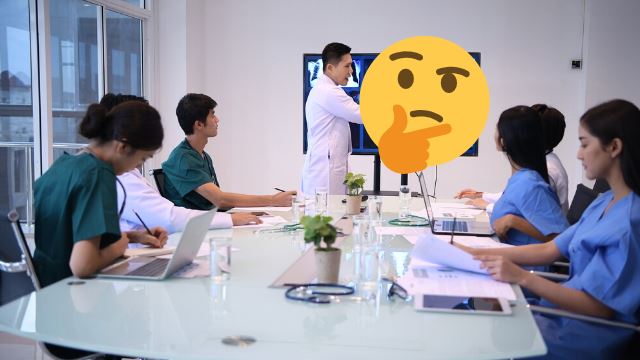
Image via Shutterstock
Our liver is the second largest organ in our body. All that food and drinks we consume? The liver processes nutrients from them and filters substances that may be harmful from your blood.
So, what’s a fatty liver? First off—it looks like this:

Image via Shutterstock

Image via Shutterstock
Here’s what your liver is supposed to look like if it’s healthy:

Image via Shutterstock
A fatty liver, also known as hepatic steatosis, happens when there’s more than 5% fat accumulated in your liver. This leads to liver inflammation, which can damage your liver and cause scarring. This can result in liver failure.
Here are the symptoms that could mean you have a fatty liver:

Image via Shutterstock
- Appetite loss
- Weakness/Fatigue
- Confusion
- Weight loss
- Nosebleeds
- Yellow skin and eyes

Image via Shutterstock
- Itchy skin
- Web-like clusters of blood vessels beneath your skin
- Abdominal swelling
- Abdominal pain
- Breast enlargement (in men)
- Your legs swell
Don’t worry, fatty liver can be managed.
Although there’s no treatment for a fatty liver, you can reverse it.

Image via Luis Quintero/Pexels
To do so, you’d need to start changing your lifestyle into a healthier one. One of the most important steps you can take is to watch what you eat: avoid overeating and reduce your intake of carbs—yes, that means you cut down on or remove junk food from your diet! Make sure you increase your physical activity, too.
You can also find out more about nutrients needed for your condition.
Our liver is the only organ that’s able to regenerate and repair itself under damage. However, we need enough supply of essential phospholipids for its regeneration. Phospholipids (specifically phosphatidylcholine) are the building blocks of cell membranes, and your body requires a constant supply of them to repair damaged liver cell membranes.

Image via Shutterstock
Besides that, B vitamins are essential in supporting a healthy liver. They help release energy from the foods you consume instead of continuously depositing them in liver cell membranes—which later results in a fatty liver.
B vitamins produce glutathione, an internal source of antioxidant which fights off free radicals (unstable atoms that can damage cells) and facilitates the elimination of xenobiotics (e.g drugs and pollutants) [1].

Image via Shutterstock
On the other hand, Vitamin E is an important antioxidant which helps neutralise free radicals before they can cause damage to the phospholipid bilayer of the liver cell membrane.
Research has shown people with fatty liver, liver fibrosis and cirrhosis have managed to improve their liver functions by consuming phospholipids together with B vitamins (B1, B2, B3, B6, B12) and vitamin E. [2] [3]
Now that you have the information you need to have a healthy liver, it’s time to start your healthy lifestyle!
This article is brought to you by Mega Lifesciences Sdn Bhd & BiO-LiFE (Marketing) Sdn Bhd. For details, visit www.biolife.com.my or contact 03-7499 7999.
[1]Pastore A et al. 2003. Analysis of glutathione: implication in redox and detoxification. Clinica Chimica Acta. 333(1): 19-39.
[2] Report on post marketing studies of the effectiveness of Livolin Forte – Hepatoprotector, in patients with chronic diffuse hepatic diseases by Dr MD (Medicine), Kiev Medical Academy, Ukraine.
[3] Vdovychenko, VI, Denysyuk, YS, Bidyuk, ОА, Kopiy, NL, and Ferents, IM, 2006. Experience of treatment of chronic alcoholic hepatitis with Livolin Forte. Modern Gastroenterology, No.6(32):9-11.